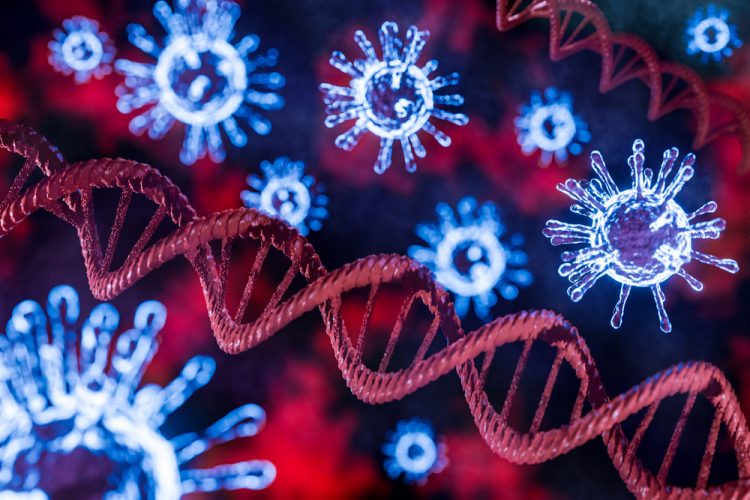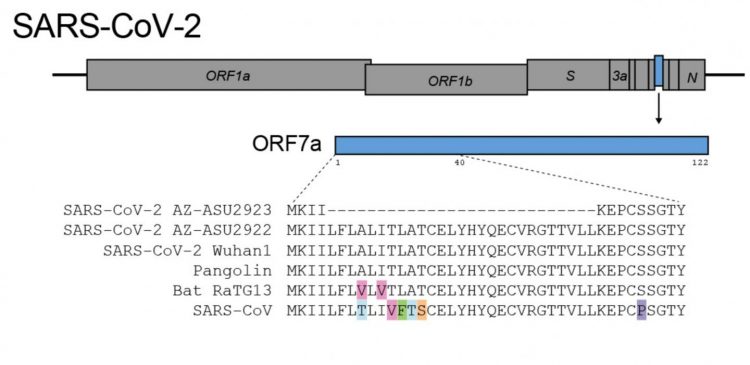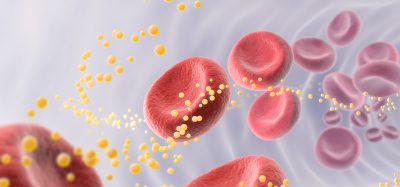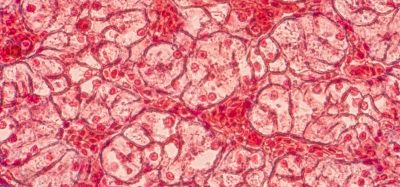Unique mutation in SARS-CoV-2 virus identified from next-generation sequencing
Posted: 5 May 2020 | Victoria Rees (Drug Target Review) | No comments yet
Next-generation sequencing has revealed an 81-base pair mutation of the SARS-CoV-2 virus, which could be used to develop new antivirals or vaccines.


A group of researchers has been tracking how the SARS-CoV-2 virus, which causes COVID-19, has been spreading, mutating and adapting over time.
To trace the trail of the virus globally, a team from Arizona State University (ASU), US is using next-generation sequencing at ASU’s Genomics Facility, to rapidly read through all 30,000 chemical letters of the SARS-CoV-2 genome.
Each sequence is deposited into a worldwide gene bank. To date, over 16,000 SARS-CoV-2 sequences have been deposited in GISAID’s EpiCoVTM Database. The sequence data shows that SARS-CoV-2 originated from a single source from Wuhan, China, while many of the first Arizona cases analysed showed travel from Europe as the most likely source.
Now, using a pool of 382 nasal swab samples obtained from possible COVID-19 cases in Arizona, the team has identified a SARS-CoV-2 mutation that had never been seen before – where 81 of the letters have vanished, permanently deleted from the genome.
“One of the reasons why this mutation is of interest is because it mirrors a large deletion that arose in the 2003 severe acute respiratory syndrome (SARS) outbreak,” said lead researcher Efrem Lim, an assistant professor at ASU’s Biodesign Institute. During the middle and late phases of the SARS epidemic, SARS-CoV accumulated mutations that attenuated the virus. Scientists believe that a weakened virus that causes less severe disease may have a selective advantage if it is able to spread efficiently through populations by people who are infected unknowingly.
The ASU virology team had been established to perform research on seasonal flu viruses, but when the third case of COVID-19 was found in Arizona, they began examining the spread of SARS-CoV-2.
All the positive cases show that the SARS-CoV-2 viral genomes were different, meaning they were independent from each other. This indicates that the new cases were not linked to the first Arizona case in January, but the result of recent travel from different locations.
As the 81-base pair mutation has never been found in the GISAID database before, the researchers say it could also provide a clue into how the virus makes patients sick. It could also form a new starting point for other scientists to develop antiviral drugs or formulate new vaccines.


A genome deletion removes 27 protein building blocks, called amino acids, from the SARS-CoV-2 accessory protein ORF7a. The protein is very similar to the 2003 SARS-CoV immune antagonist ORF7a/X4 [credit: Efrem Lim, ASU Biodesign Institute].
SARS-CoV-2 makes accessory proteins that help it infect its human host, replicate and eventually spread from person to person. The genome deletion removes 27 amino acids from the SARS-CoV-2 accessory protein ORF7a. The protein is very similar to the 2003 SARS-CoV immune antagonist ORF7a/X4.
The ASU team is now performing further experiments to understand the functional consequences of the viral mutation. The viral protein is thought to help SARS-CoV-2 evade human defences, eventually killing the cell. This enables the virus to infect other cells in a chain reaction that can quickly cause the virus to make copies of itself throughout the body, eventually causing COVID-19 symptoms.
Lim points out that only 16,000 SARS-CoV-2 genomes have been sequenced to date, which is less than 0.5 percent of the strains circulating.
The group will continue tracking different genetic strains of COVID-19. A newly formed Arizona COVID-19 Genomics Union (ACGU) hopes to use big data analysis and genetic mapping to give healthcare providers and public policy makers an edge in fighting the growing pandemic.
The study was published in the online version of the Journal of Virology.
Related topics
Disease Research, Genetic Analysis, Genomics, Next-Generation Sequencing (NGS), Sequencing
Related conditions
Coronavirus, Covid-19
Related organisations
Arizona COVID-19 Genomics Union (ACGU), Arizona State University (ASU), GISAID
Related people
Efrem Lim







